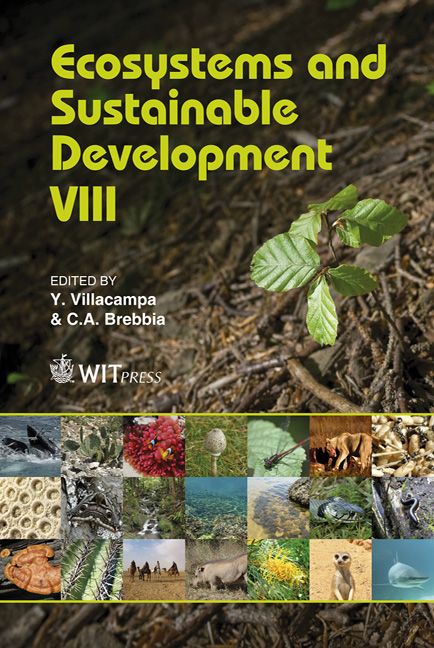Determination Of The Amount Of Carbon Stored In A Disturbed Mangrove Forest In Campeche, Mexico
Price
Free (open access)
Transaction
Volume
144
Pages
12
Page Range
327 - 338
Published
2011
Size
2,658 kb
Paper DOI
10.2495/ECO110291
Copyright
WIT Press
Author(s)
R. M. Cerón, J. G. Cerón, J. J. Guerra, J. C. Zavala, L. E. Amador, E. Endañu & G. Moreno
Abstract
Carbon sequestration potential of mangrove forest in Campeche, Mexico, was investigated. Field work was conducted at two sites at the border of the estuary named \“Terminos Lagoon” (Estero-Pargo and Bahamitas) between February and August in 2009. The mangrove forest in both sites has been subjected to anthropogenic pollution during the last years and it can be considered as perturbed. Six sampling campaigns were performed considering three climatic periods (\“Norths” season, dry season and rainy season). Seasonal influence on carbon storage was evident, but also the influence of tides was significant, with the highest carbon storage during \“Norths” and dry seasons (ranged from 10.63 to 37.64 Kg C m-2 for Estero-Pargo, and from 12.8 to 39.9 Kg C m-2 for Bahamitas). Carbon storage was higher in flooded soils with dominant vegetation of red mangrove in comparison with sampling zones where dominant vegetation was button mangrove. Organic matter and organic carbon content were higher at 30 cm depth during \“Norths” season, when heavy rains and long periods of tidal flooding occurred with low rates of litter export that maintained anoxic conditions. Comparing these results with carbon storage data obtained in other sites, it can be suggested that neutral and sandy soils as this study area and associations of red mangrove have a good potential of carbon sequestration. Since studied mangrove individuals were from young to mature in reproductive age, it can be conclude that this potential will increase in the next years. Keywords: carbon sequestration potential, carbon sinks, mangrove forest, wetlands, Campeche.
Keywords
carbon sequestration potential, carbon sinks, mangrove forest, wetlands, Campeche





